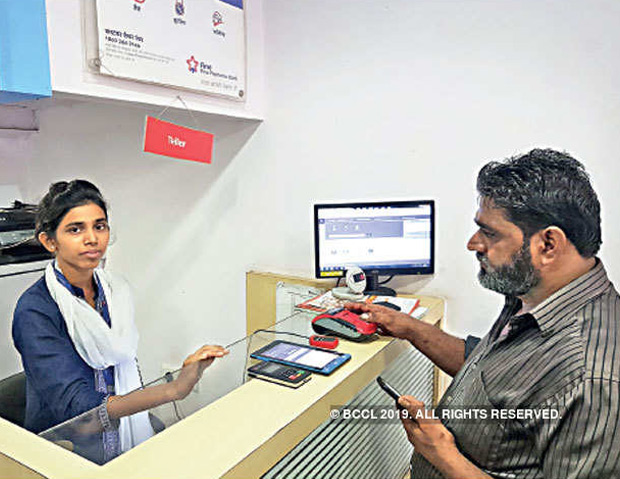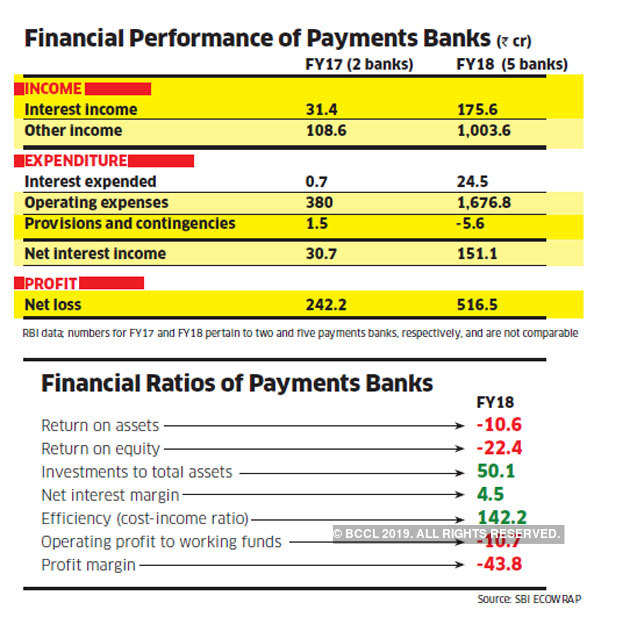India's payments bank space: A case of near yet too far

Most big players in the payments bank space have found the going tough and are likely to shut shop.
Sangharsh Nagar looks like a rural pocket trapped in the urban sprawl of Mumbai. A herd of goats roam around the main Khairani Road, blocking auto-rickshaws already jostling for space with mini-trucks.
As it starts to rain, a furniture-shop owner quickly pulls the goats into the store. A little hillock with hutments on the east adds to the out-of-city feel. Only the high-rises on the western horizon remind you that the tony neighbourhoods of Chandivali and Powai are barely a kilometre away.
There are many pockets like Sangharsh Nagar even in India’s financial capital where the need for financial inclusion cries out loud. The locality has some shops offering money-transfer facility. No banks or ATMs are in sight though, save for a branch of Fino Payments Bank. However, a solution to the lack of access to banking and insurance is playing out in a narrow lane.
The little kirana shop run by Raj Kumar Gupta, 30, doubles up as a Fino Payments Bank merchant outlet. It services at least a hundred banking customers a day who come to deposit or withdraw cash or to transfer money to other banks. On good days, Gupta even opens half a dozen new bank accounts and hands over instant debit cards to the new account holders.
Such initiatives have helped people like Mahendra Thakur, 28, a barber from the village of Mokamo near Giridih in Jharkhand. Thakur, who opened his Fino Payments Bank account in his village, is happy he can operate it from Mumbai. Bhikaji Balwant, a manual labourer with roots in Maharashtra’s Jalna, comes to Gupta’s kirana store to check his account balance. But he decides not to dip into the Rs 2,900 in the account.
An elderly woman in a red salwar-kameez asks if she can come back at night to make a transaction. A new customer asks if the bank account comes with a cheque book. It does not, Gupta replies, but Fino is considering adding the facility. Outlets like Gupta’s get more banking customers in a day than the Fino Payments Bank branch on the main road. Often the store and the banking outlet feed off each other’s clientele, adds Gupta.

This is one of a dozen merchant outlets that Fino has set up in this area under the supervision of its Khairani Road branch. A similar hub-and-spoke model has helped Fino expand across India. Sometimes its representatives visit homes with authentication equipment to help senior citizens make transactions. Two merchant outlets are coming up on top of the hillock so residents there can have easier access to the banking system.
These initiatives might indicate a robust model in the payments bank space. But not all is hunky-dory. The Reserve Bank of India (RBI) had in 2015 issued 11 licences to entities to start payments banks. Today, there are only three serious players left in the market. Therefore, some questions have been raised if the model can succeed. Many have blamed RBI’s restrictions for the payments bank model not taking off.

Chief economist of State Bank of India Soumya Kanti Ghosh said in a recent report: “Due to strict regulatory guidelines, payments banks’ business operations are restricted to only mobilising deposits and investing in government securities. This has led to substantial losses in their operations.”
However, three players - Fino Payments Bank, Airtel Payments Bank and Paytm Payments Bank — seem to have cracked the business model. They also have big backers. Airtel Payments Bank has investments from Kotak Mahindra Bank; ICICI Bank, BPCL, IFC, Blackstone and Intel Capital have invested in Fino; Paytm Payments Bank’s promoter has the backing of SoftBank and Alibaba.
Among the other players, India Posts Payments Bank was upgraded to a scheduled commercial bank in July. Jio Payments Bank, a joint venture between Reliance Industries and State Bank of India, is still in the pilot stage. The combined firepower of the giants could disrupt the field. NSDL Payments Bank had made a start in September 2018.
Those who have backed out from the payments bank space include Tech Mahindra, Cholamandalam Finance and a consortium of IDFC Bank, Telenor and Sun Pharma. In late July, Aditya Birla Payments Bank said it would close operations by October 2019 due to “unanticipated developments” that rendered the “economic model unviable”. This came as a surprise. The Aditya Birla Group had two payments bank licences but had to give up the permit for the Vodafone m-Pesa platform when the Vodafone-Idea merger happened.
On the heels of Aditya Birla Payments Bank declaring its intent to shut down, SBI’s Ghosh painted a grim picture for the sector in a report dated July 22, 2019. His report, A Case of Near yet Too Far, pointed out that five payments banks posted a combined net loss of Rs 516 crore in 2017-18, even though they reported a positive net interest income (difference between interest earned and interest paid) of `151 crore. While most of the loss can be attributed to expenditure related to expansion, the positive net interest income suggests the payments bank model is inherently safe.
Commenting on the limitations in the model, Ghosh wrote: “Payments banks emerging as a real competitor to banks is not a near term possibility.” There are various RBI restrictions on the sector, he said. Deposit collection for payments banks is capped at Rs 1 lakh per customer, and they are not allowed to lend. The money collected as deposits has to be parked in government securities and larger banks. “Payments banks are turning out to be working merely as an aggregator.”
The steep capital requirement for payments banks - at 15% of risk-weighted assets against 8% according to Basel III norms and 9% mandated by RBI for scheduled commercial banks - would keep it free of credit risk and ensure low market risk, Ghosh said. But it would expose PBs to operational and liquidity risks. The experiment has failed as only so few were still operational and they can succeed only if they cross-sold services such as insurance and loans from other banks and have deep tie-ups with universal banks and telecom companies, he added.

Active payments banks already follow what Ghosh has advocated. They are, in fact, champions of these tenets. Anubrata Biswas, MD & CEO of Airtel Payments Banks, which is backed by the telecom major, says they already use 5 lakh neighbourhood banking points to allow cash withdrawals and deposits. “We are excited about the payments bank model, which is anchored in the context of serving a very large underbanked and unbanked population of our country.”
Fino has also capitalised on the tie-up route. Apart from selling insurance products of ICICI Lombard, it also helps generate leads for loans for ICICI Bank, which is one of its key promoters. It has also worked with ICICI Lombard to create a cashless hospitalisation medical insurance product (at government hospitals) at an annual premium of Rs 600. In a tie-up with Suryoday Small Finance Bank, Fino seems to have also worked around the Rs 1 lakh limit on deposits. If the deposit in a customer’s account crosses Rs 1 lakh, it is automatically transferred into a bank account in the customer’s name at Suryoday.
A payments bank can take banking to the masses but it cannot aspire to be a regular bank, says managing director of Fino Rishi Gupta. It has to find its own business model. It must earn from transaction charges and fees, and not from the spread between interest rates for deposits and advances, he says. “Every service of ours is charged; nothing is free.” Fino had recorded revenues of Rs 375 crore in 2018-19 and expects to break even in 2019-20.
A Paytm spokesperson says their payments bank became profitable in the first year of its operation and earned a net profit of Rs 19 crore in 2018-19. “Paytm Payments Bank focuses more on transactions than balances in the account,” he adds. Paytm started off as an e-wallet business but invested in converting its customers into bank account holders. Today it operates 27 crore wallets and 4.7 crore savings bank accounts.
There is ample indication that some players got the model right and some did not. Adaptability seems to be the key. Payments banks have already requested the RBI to increase their deposit limit.
An indicator of differentiation in the sector is how the banks responded to the 2018-19 target of 30 billion digital transactions that was set by the Ministry of Electronics and Information Technology. While Airtel and Fino were able to reach more than double the target, Paytm clocked 122% of the target number, Jio scored 15%, Indiapost was at 0.15% and Aditya Birla barely opened its account.
Rules for payments banks were announced back in 2015 and payments banks should explore the possibilities around current accounts to make the most of them, says Naveen Surya, the chairman of the Fintech Convergence Council of India. This will help them reach and serve small businesses. “You have to think differently, your banking hours need to change. Even businesses can face financial exclusion, and you have to address that need,” adds Surya, a former managing director of ItzCash.
Lessons in adaptability from Sangharsh Nagar can also help — like how a kirana store can double up as a banking counter, how a customer can use a Fino Payments Bank’s outlet to deposit cash in his Union Bank account, or like how a goatherd can also sell furniture.
